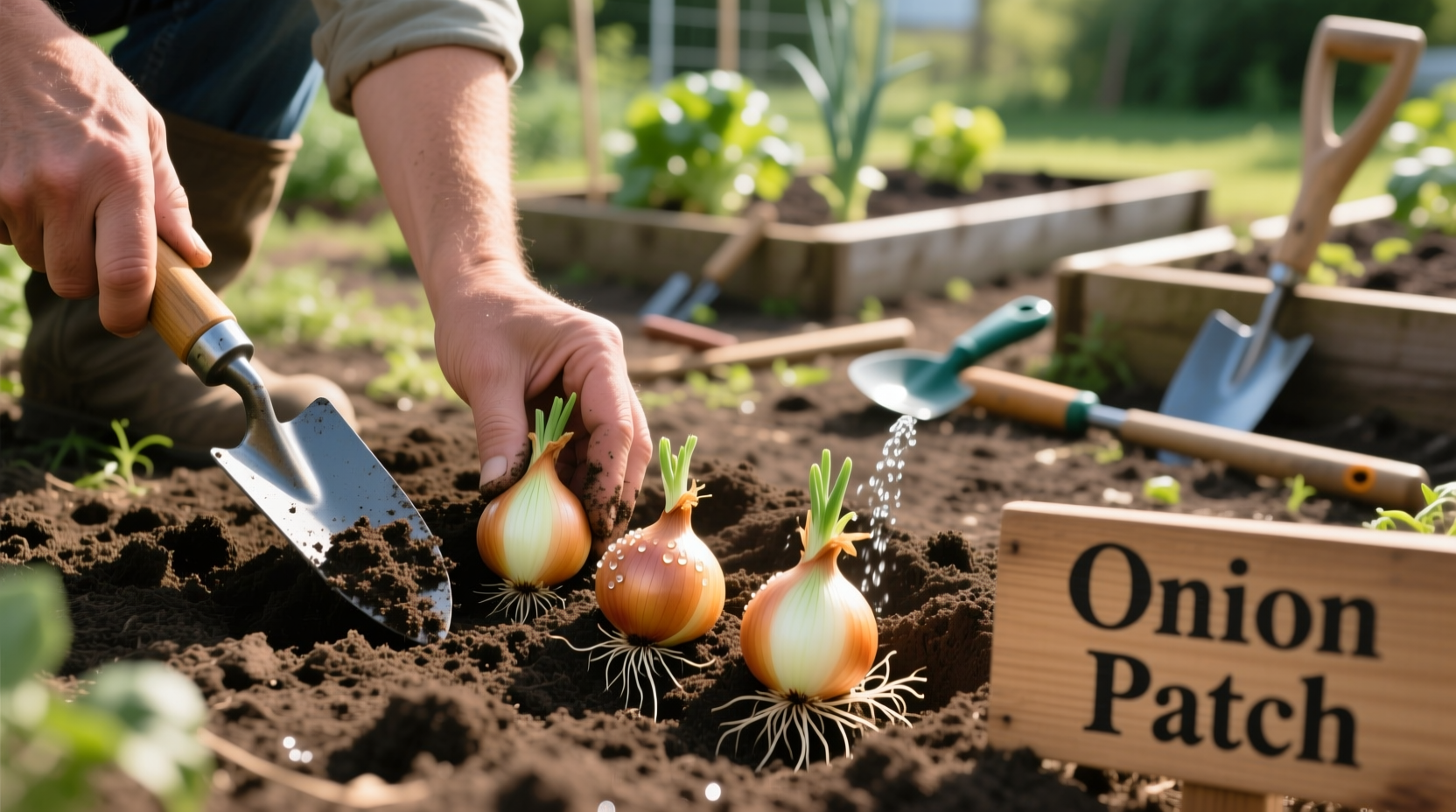There's nothing quite like harvesting your own homegrown onions—crisp, flavorful, and free from store-bought chemicals. Whether you're working with a sprawling backyard or a compact balcony garden, onions are one of the most rewarding vegetables to cultivate. This guide delivers everything you need to grow robust onions, whether you're a first-time gardener or looking to refine your technique.
Understanding Onion Growth Timelines
Onions follow a predictable growth pattern that varies slightly by variety and climate. According to the USDA Agricultural Research Service, the complete lifecycle spans 100-170 days depending on type:
| Growth Stage | Duration | Key Indicators |
|---|---|---|
| Germination | 7-14 days | Green shoots emerge from soil |
| Leaf Development | 4-6 weeks | 3-4 healthy green leaves |
| Bulb Formation | 3-5 weeks | Stems thicken visibly |
| Maturity | 2-3 weeks | Top leaves yellow and fall over |
Selecting Your Onion Type for Success
Choosing the right onion variety makes or breaks your harvest. Onions fall into three main categories based on daylight requirements:
- Long-day varieties (14-16 hours light): Best for northern regions (zones 1-5). Includes Yellow Sweet Spanish and Walla Walla.
- Intermediate-day varieties (12-14 hours light): Suitable for mid-latitudes (zones 5-7). Includes Candy and Super Star.
- Short-day varieties (10-12 hours light): Ideal for southern regions (zones 7+). Includes Texas Grano and Red Creole.
For beginners, onion sets (small pre-grown bulbs) offer the highest success rate with minimal effort. Plant them pointy-end up, 1 inch deep, 4-6 inches apart in early spring as soon as soil can be worked.

Soil Preparation Essentials
Onions demand well-draining soil rich in organic matter. The University of Minnesota Extension recommends:
- Testing soil pH (ideal range: 6.0-7.5)
- Amending with 2-3 inches of compost before planting
- Adding balanced fertilizer (10-10-10) at planting time
- Avoiding fresh manure which causes excessive foliage growth
For heavy clay soils, create raised beds 4-6 inches high to improve drainage. Sandy soils benefit from additional compost to retain moisture and nutrients.
Planting Techniques That Guarantee Results
Timing your planting correctly ensures maximum bulb development. Follow these regional guidelines:
- Northern zones: Plant sets 4-6 weeks before last frost date
- Mid-latitude zones: Plant in late winter/early spring
- Southern zones: Plant in fall for winter harvest
Space onion sets 4-6 inches apart in rows 12-18 inches apart. Plant seeds ¼ inch deep, thinning to final spacing when seedlings reach 4 inches tall. Water thoroughly after planting to settle soil around bulbs.
Watering and Feeding Schedule
Consistent moisture is critical for onion development. During bulb formation (when tops reach 6 inches), provide 1 inch of water weekly. Reduce watering as harvest approaches to prevent rot. The National Agricultural Library notes that irregular watering causes splitting and disease susceptibility.
Fertilize every 2-3 weeks with nitrogen-rich fertilizer until bulbs begin forming, then switch to phosphorus-potassium formula to encourage bulb development.
Managing Pests and Diseases Organically
Onions face several common threats that can be managed without chemicals:
- Thrips: Spray with neem oil solution every 5-7 days
- Onion maggots: Use floating row covers at planting
- Purple blotch: Improve air circulation and avoid overhead watering
- Rust: Remove affected leaves immediately
Companion planting with carrots, beets, or chamomile deters many onion pests naturally.
Harvesting and Curing for Long Storage
Harvest onions when at least 50% of tops have naturally fallen over. Gently lift bulbs with a garden fork, then cure them in a warm, dry, well-ventilated area for 2-3 weeks. The Oregon State University Extension confirms proper curing doubles storage life by forming protective dry outer layers.
After curing, trim roots to 1 inch and tops to 1 inch. Store in mesh bags in a cool (32-40°F), dark, dry place with good air circulation. Properly stored onions can last 6-8 months.
Avoiding Common Onion Growing Mistakes
Even experienced gardeners make these preventable errors:
- Planting too deep (bulbs won't develop properly)
- Overcrowding plants (reduces bulb size)
- Watering inconsistently (causes splitting)
- Harvesting too early (small bulbs with poor storage)
- Skipping the curing process (leads to rapid spoilage)
Remember that onions are heavy feeders but shallow-rooted, so regular but gentle cultivation is essential. Avoid walking on onion beds which compacts soil and damages roots.











 浙公网安备
33010002000092号
浙公网安备
33010002000092号 浙B2-20120091-4
浙B2-20120091-4